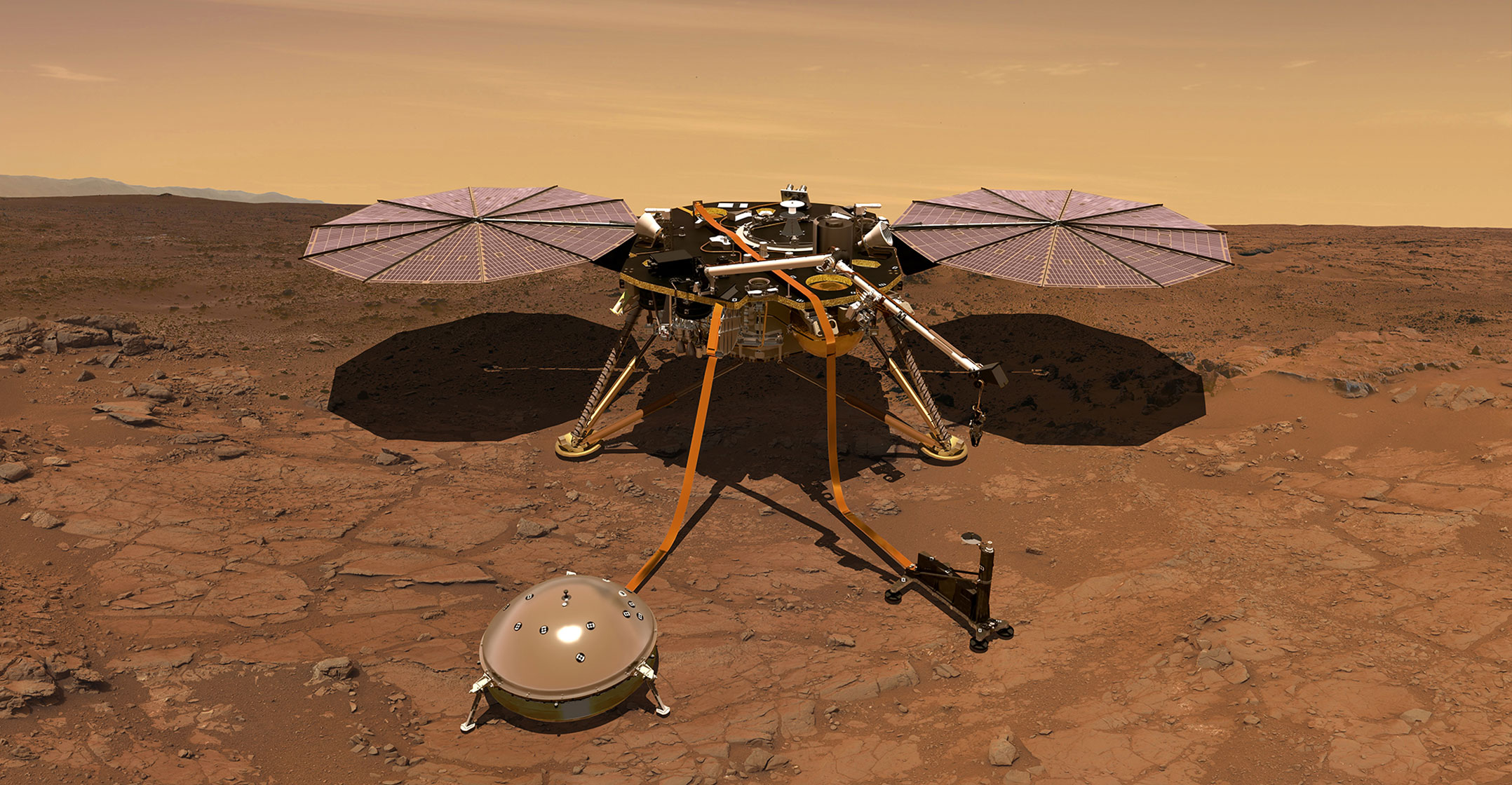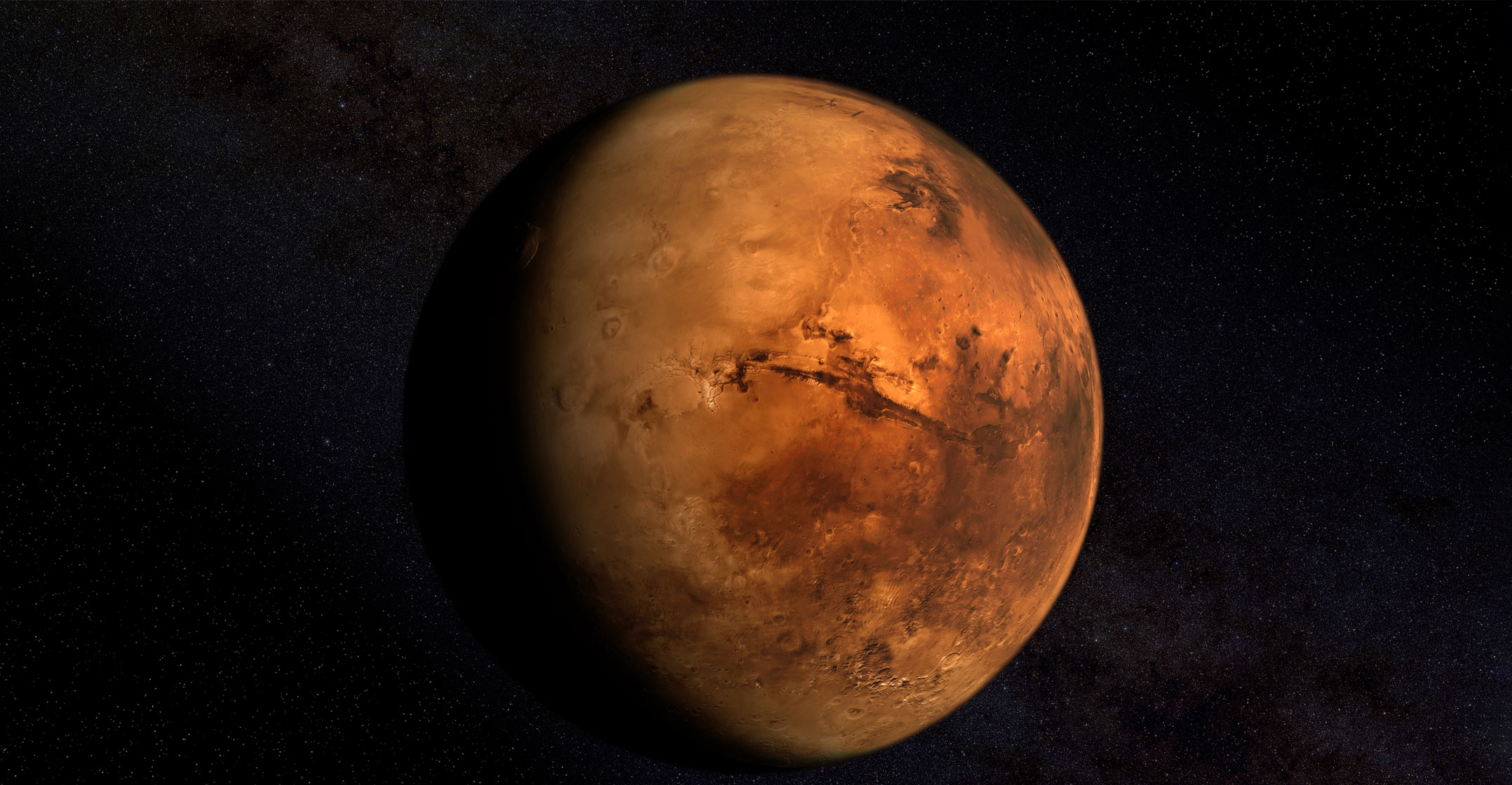
It’s notoriously hard to land on Mars, yet Nasa managed just that with its recent InSight lander. From childhood, I’ve loved watching landings and other spacecraft manoeuvres on TV — always feeling a bit of that edge-of-the-seat excitement. But it didn’t prepare me for the feeling of watching a mission I’ve worked on. Each period of silence during the seven-minute descent of InSight felt like an eternity, with time re-exerting itself only during call-outs from systems engineer Christine Szalai. I will never forget the joy of the moment when she finally announced “touchdown confirmed”.
The InSight mission has been over 10 years in the planning. Among planetary missions, it’s a bit of an oddball. While most missions are designed to look at the surface or atmosphere of planetary bodies, InSight’s goal is to look deep beneath the surface — helping us crack the mystery of how it and the other rocky planets formed.
The lander carries a number of instruments, including seismometers, a heat flow probe, magnetometer and a radio transmitter. The Heat Flow and Physical Properties Probe (HP3) will hammer to a depth of five metres below Mars’s surface, almost twice as far as the handheld drills of the lunar missions. Its measurements will tell us how quickly heat is being lost from the planet’s interior — helping us understand how Mars cools over time.
The Rotation and Interior Structure Experiment (RISE) will essentially bounce a radio signal sent from Earth back to us. The difference in frequency between the original and returned signal can then be used to work out the velocity of the InSight lander relative to Earth, rather like the pitch of a siren tells us whether it is moving toward or away from us. We’re specifically interested in using the velocity to tell us how Mars’s axis of rotation wobbles over time. The size of these wobbles is dependent on the structure of the interior, and especially its dense metallic core. Just like a raw egg wobbles more than a hard-boiled one when spinning on a flat surface, Mars will wobble more if its core is liquid.
Seismometers
I work on the Seismic Experiment for Interior Structure (SEIS), which consists of two seismometers, mounted on a levelling system that will sit about 15cm above the surface of Mars. This experiment is designed to tell us the amount of seismic activity on Mars. We will also use the time it takes for seismic waves to reach the seismometers to tell us about the temperature and composition of the interior, rather like a doctor uses a CT scanner.
We now have about three months during which the instruments will be deployed and activated. Over the next few days, the health of the systems will be checked, and the lander and surrounding area will be thoroughly imaged so that the operations team can decide where to place InSight’s heat flow probe and seismometers. The first image taken from the surface suggests that we have landed on a shallow sand-filled crater almost free of rocks, so it looks like there will be multiple options.
 Around mid-December, a robotic arm will lift the tripod-mounted seismometers off the deck of the lander and lower them to the surface. After detailed checks, the levelling system will be used to make sure the seismometers are perfectly horizontal. By mid-January, a shield should be placed over the top of the seismometers to protect them from the elements. Then they can be turned on, and the heat flow probe will be deployed.
Around mid-December, a robotic arm will lift the tripod-mounted seismometers off the deck of the lander and lower them to the surface. After detailed checks, the levelling system will be used to make sure the seismometers are perfectly horizontal. By mid-January, a shield should be placed over the top of the seismometers to protect them from the elements. Then they can be turned on, and the heat flow probe will be deployed.
The heat flow probe will start returning data as soon as it starts to hammer its way beneath the surface, so we expect to have results in the first half of 2019. The radio experiment will take somewhat longer. It just so happens that, over the next year, we will not be in the best position to see the wobble of Mars’s pole. That changes in mid-2020, when we should be ideally situated to uncover the secrets of its core.
As for the SEIS experiment, when we see something exciting will depend on how often seismic energy is generated. We don’t currently know this. What we do know is that there are two potential sources of seismic activity: meteorite impacts and “marsquakes” created by movement along faults near the surface.
While we know that meteorites frequently hit Mars, the rate of fault motion is a mystery. Unlike the Earth, Mars has no moving tectonic plates, so it is estimated that fault movement happens as the planet’s interior cools. However, some of the youngest faults on Mars appear to have been formed not by cooling, but by the movement of molten rock beneath the surface. Discovering the frequency and nature of marsquakes will help us work out the exact causes.
Through its three main experiments, InSight will provide a “snapshot” of the present day state and composition of Mars. But that isn’t where the scientific discoveries will end. Ultimately, the mission will help us understand the processes that took place over 4.5 billion years ago, when the solar system was very young.
Fundamental key
Here’s why. The composition of a planet is set when it formed, which in the case of Mars was only a few million years after the sun ignited. We think that as a result of its greater distance from the sun, Mars formed from different, more volatile-rich material than Earth. However, until Mars’s composition is known, this idea is very hard to test and develop. The data returned from InSight will provide a fundamental key to understanding how the rocky planets in our solar system formed — and perhaps even those around other stars.
The composition, temperature and magnetic field of our planet are also vital to sustaining life on our planet. So, even though InSight is not looking for life, it will give us new clues as to how Earth was uniquely primed for life over four billion years ago.
InSight has already been a huge engineering success, and the science team now get the incredible opportunity to use it to reveal Mars’ secrets. We hope you’re as excited as we are.![]()
- Written by Bob Myhill, UK Space Agency postdoctoral fellow, University of Bristol
- This article is republished from The Conversation under a Creative Commons licence

